Iran is one of the most vulnerable countries to climate change in the Middle East and North Africa (MENA). It also bears significant responsibility for climate change globally and in the region, as it ranks first in the Middle East and eighth worldwide, for its greenhouse gas (GHG) emissions, with annual carbon dioxide amounting to nearly 617 tons. These substantial emissions stem primarily from Iran’s heavy reliance on oil and natural gas. Nevertheless, the country’s rapid urbanization process has also contributed significantly to elevated air pollution levels and the formation of heat islands, where urban areas experience higher temperatures than their surroundings.
Climate change in Iran is primarily distinguished by reduced precipitation and increased temperatures. Given its location in the mid-latitude belt, this poses a particularly daunting challenge for the country, encompassing arid and semi-arid regions with yearly precipitation less than one-third of the global average. More than 82 percent of Iran is already classified as arid or semi-arid, and rain in the country only reaches approximately 250 millimeters. Iran is also the sixth most natural hazard-prone country in the world, frequently experiencing floods, landslides, and droughts.
Temperatures in Iran, an estimated average of 50-54 degrees Celsius during the hot seasons, continue to rise. Recent reports have indicated that Iran is projected to witness a mean temperature rise of 2.6°C and a 35 percent decrease in precipitation in the coming decades. The impact of such escalating heat was evident recently when the government initiated a two-day emergency shutdown due to temperatures exceeding 100 degrees Fahrenheit in the capital.
The country also faces severe water shortages. Geographically, Iran is situated in a dry region with elevated temperatures and relatively scarce rain and snowfall. The distribution of climate categories in Iran is as follows: 35.5 percent hyper-arid, 29.2 percent arid, 20.1 percent semi-arid, 5 percent Mediterranean, and 10 percent wet. Water resources play a crucial role and serve as one of the most significant limiting factors in the country’s development, with approximately 35 percent of Iranians experiencing water scarcity since the early 2000s. By 2019, Iran ranked fourth among countries at high risk of depleting their water supplies. Rising sea levels pose another long-term challenge for the country. By 2050, it is estimated that over 300 million homes will be impacted by rising coastlines, displacing over 100 million people.
Despite the escalating risks of climate change, the government’s efforts to expand mitigation policies remain minimal. At the same time, environmental shifts pose significant security challenges for Iran, with the government facing unrest over water shortages and mismanagement. Protests have emerged, particularly in the arid southeastern region and in the dried-up bed of the iconic river in the central city of Isfahan.
Key environment indicators
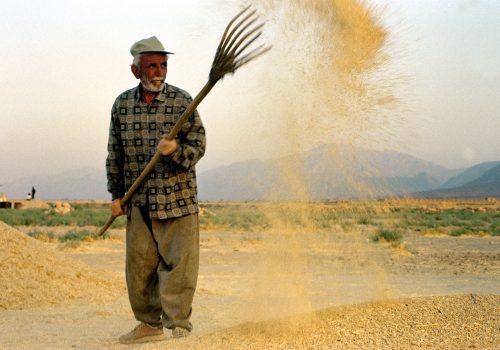
Agriculture
As temperatures rise and weather patterns change in Iran, the agriculture sector faces numerous challenges that can impact food production, economic stability, and rural livelihoods. First, decreased precipitation and changes in the timing and intensity of rainfall disrupt traditional irrigation patterns and reduce water availability for agriculture. About 60 percent of the cultivated croplands in Iran are rainfed crops, contributing to 32 percent of the total production. Decreased precipitation leads to reduced crop yields and threatens the sustainability of farming practices in the country. Second, increasing temperatures also accelerate evaporation, causing soil moisture to deplete rapidly.
Additionally, prolonged heat stress damages crops, reduces yields, and impacts livestock health and productivity. As a result, some traditional crops may become less viable in Iran under these changed climatic conditions, leading to a shift in crop patterns, and farmers might need to adopt drought-resistant or heat-tolerant crop varieties, which could further affect the diversity of agricultural production and local food traditions; including fruits, rice, and corn. The changing climate can also disrupt flowering, pollination, and fruit-setting processes, reducing crop productivity. In some cases, it may even lead to crop failure, impacting food availability and prices.
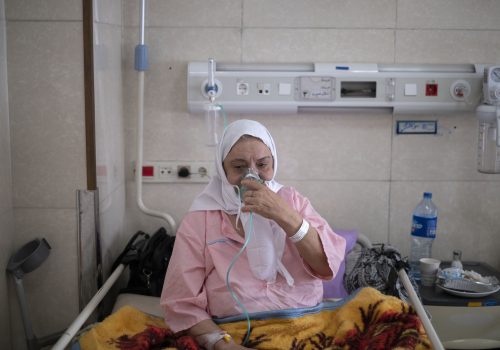
Health
Climate change in Iran has specific effects on the health sector, particularly concerning the increased occurrence and susceptibility to infectious and vector-borne illnesses. Malaria, one of the most prevalent diseases in the country, poses a significant burden. From 2002 to 2017, Iran reported a total of 134,273 malaria cases. However, there has been a decline in incidence from 0.24 cases per 1,000 people in 2002 to 0.01 cases per 1,000 people by 2017, moving closer to the government objective of malaria eradication by 2025. Water-borne diseases are also strongly influenced by climate conditions in Iran. Although cholera cases have notably decreased in the country since the 20th century, numerous regions remain susceptible to potential outbreaks due to factors like flooding, declining water quality, and the rise in population density. Climate projections indicate that an increase in temperatures by 1–1.4°C in several provinces will increase hospitalizations for diarrhea and cholera. Air pollution poses another threat to Iran’s health sector. Tehran, Iran’s capital, is one of the most polluted cities globally and will be significantly affected by increased temperatures. Tehran experienced a staggering toll in 2007, with an estimated 3,600 Iranians losing their lives every month due to smog-related issues. Overall, the WHO expects 70 climate-induced deaths per 100,000 in Iran, by 2080, compared to the estimated baseline of 6 deaths per 100,000.
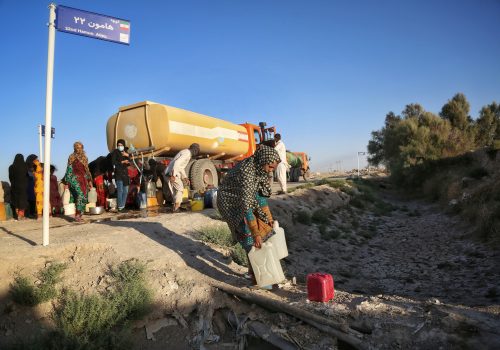
Water
The combination of climate change, variations in climate patterns, and the challenges in managing water resources is causing a widespread depletion of water sources in Iran. Consequently, there is a looming threat of the Urmia, Hamun, Parishan, and Shadegan lakes disappearing, while the annual over-extraction of groundwater is leading to a decline in its levels. Iran’s water resources are under significant strain due to the effects of climate change. For instance, in 2018, there was a 25 percent decrease in precipitation, affecting even the typically water abundant regions in the north and northwest of the country. This resulted in a substantial 33 percent reduction, approximately seven cubic kilometers (km3), in the water levels of major dams compared to the previous year. The situation in Iran has been deteriorating steadily. By the mid-2010s, Lake Urmia in the northwest was nearly on the brink of disappearance until its restoration was facilitated by the United Nations. The construction of dams, whether it’s the Karkheh River serving the Khuzestan Province’s Karkheh Dam, the Zayandeh River flowing across the Iranian plateau through Isfahan, or the Dorudzan Dam watershed in the south, has exacerbated the issue of water scarcity. Over the last few decades, Iran has emerged as the world’s third-largest builder of dams, trailing only China and Japan. Consequently, many rivers in Iran and neighboring countries have dried up, leading to heightened tensions in the region and concerns about potential conflicts related to water scarcity.
Energy
Iran has some of the world’s largest oil and gas reserves, with oil exports corresponding to 15.8 percent of the country’s GDP; Iran is, therefore, a significant contributor to Greenhouse Gas (GHG) emissions globally. While energy consumption in Iran currently scores low, it is expected to increase significantly due to climate change and escalating temperatures. Currently, electricity use per capita is relatively modest compared to global averages, at around 3,000 kilowatt-hours (kWh)/per capita, mainly met by natural gas at 61 percent and oil at 37 percent. At the same time, more frequent and extended heat waves are projected to increase energy demand for cooling significantly and require more extended periods of continuous supply. To address these issues, an energy subsidy reform has been introduced since the early 2000s, aiming to promote energy-efficiency technologies and feed renewable energy resources into the energy mix.
Relevant publications and reports



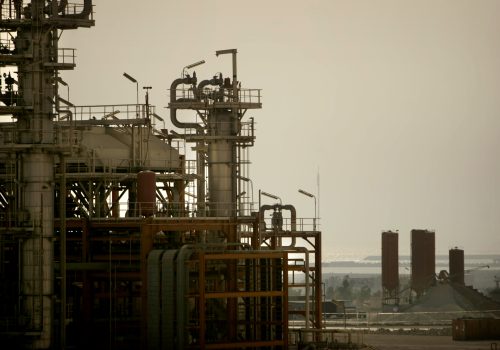
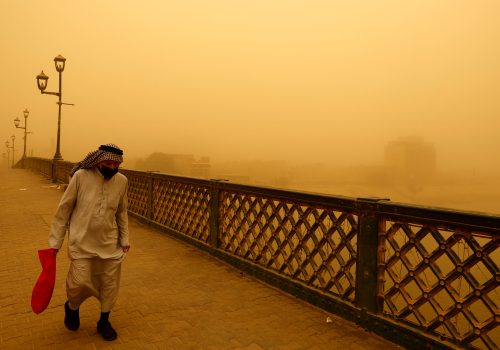
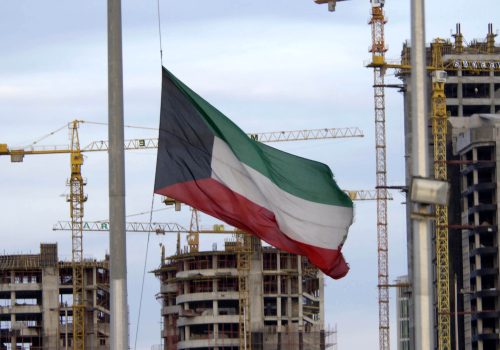

Follow us on social media